#Broye-Vully
Text








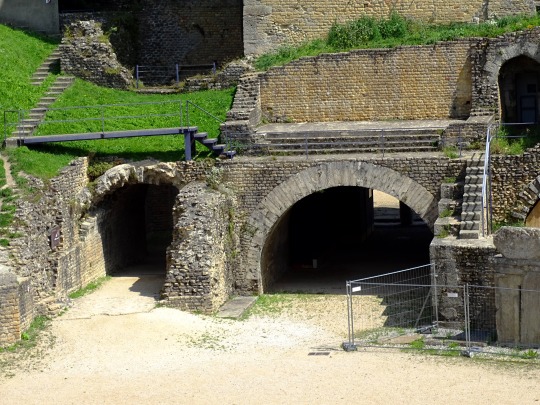

Avenches Amphitheatre (No. 1)
The Avenches Amphitheatre was built in the Roman town of Aventicum in Germania Superior (now Avenches in Switzerland).
It was erected around the year 130 but was enlarged and remodelled about 30 years later to bring its appearance closer to that of the great monumental amphitheatres of the Roman Empire. Partially dismantled in the 1990th century to extract lime from its limestone, its structure was used in the Middle Ages to support buildings. It was restored and rehabilitated in the 1990s, and is used as a setting for cultural events.
Source: Wikipedia
#Avenches Amphitheatre#Avenches Roman Amphitheatre#Arènes d'Avenches#L’évêque Tower#tower of the bishop#Suisse#Schweiz#Switzerland#Vaud#Waadt#summer 2021#travel#original photography#vacation#tourist attraction#landmark#architecture#Broye-Vully#viillage#French part#landscape#countryside#Europe#flora#tree#stairs#arch#flower#Aventicum
19 notes
·
View notes
Video
youtube
Cardiobalance Kaufen Freiburg ⚠️ Cardio Calance Apotheke Freiburg ⚠️ Cardiobalance Geberich Amazon
✅ Website Schweiz: https://ch.cardiobalanceoriginal.com/?utm_source=135641
✅ Website Deutschland: https://de.cardiobalanceoriginal.com/?utm_source=135639
✅ Website Österreich: https://at.cardiobalanceoriginal.com/?utm_source=135451
Sie, die in Freiburg hier in der Schweiz leben und mehr Informationen über den Kauf von Cardiobalance hier aus Freiburg wissen, sehen Sie sich dieses Video bis zum Ende an! 00:02 - cardiobalance 00:15 - cardio balance kaufen Freiburg 00:30 - cardio balance 00:44 - cardiobalance kaufen Freiburg 00:57 - cardiobalance kaufen 01:14 - geberich gmbh cardio balance Freiburg 01:25 - geberich gmbh cardio 01:49 - cardo balance 02:07 - geberich cardio balance 02:42 - cardio balance geberich Sehen Sie sich auch: Cardio Balance Nebenwirkungen? ⚠️ CARDIOBALANCE ⚠️ Geberich gmbh Cardio Balance Original kaufen https://youtu.be/y6n0aWi3nqQ Cardio Balance Erfahrungen ⚠️ Cardio Balance Stiftung Warentest ⚠️ Cardio Balance Test ⚠️ GEBERICH https://youtu.be/7RLZZHGiQrk Cardio Balance Apotheke ⚠️ Cardiobalance ⚠️ Cardiobalance Website ⚠️ DM ONLINE https://youtu.be/fJqeuV3RVIw teilen Sie: https://youtu.be/GzeQ8mSA0IU Cardiobalance Kaufen Freiburg ⚠️ Cardio Calance Apotheke Freiburg ⚠️ Cardiobalance Geberich Amazon Cardiobalance Kaufen Freiburg ⚠️ Cardio Calance Apotheke Freiburg ⚠️ Cardiobalance Geberich Amazon Cardiobalance Kaufen Freiburg ⚠️ Cardio Calance Apotheke Freiburg ⚠️ Cardiobalance Geberich Amazon cardio balance Freiburg, cardio balance apotheke Freiburg, cardio balance dm Freiburg, cardio balance, cardio balance stiftung warentest, cardio balance apotheke, cardiobalance, cardio balance fake, cardio balance dm, cardio balance nebenwirkungen, cardiobalance kaufen, cardio balance kaufen, cardio balance amazon, geberich gmbh cardio balance, bodyfokus cardio balance, cardo balance, geberich cardio balance, Cardio Balance Freiburg, Cardio Balance Düdingen, Cardio Balance Murten, Cardio Balance Bulle, Cardio Balance Schwarzenburg, Cardio Balance Villars-sur-Glâne, Cardio Balance Domdidier, Cardio Balance Marly, Cardio Balance Flamatt, Cardio Balance Schmitten, Cardio Balance Corminboeuf, Cardio Balance Granges-Paccot, Cardio Balance Givisiez, Cardio Balance Tafers, Cardio Balance Paffeien, Cardio Balance Treyvaux, Cardio Balance Ependes, Cardio Balance Murten, Cardio Balance Bösingen, Cardio Balance Courtepin, Cardio Balance Gurmels, Cardio Balance Kerzers, Cardio Balance Morat, Cardio Balance Alterswil, Cardio Balance Giffers, Cardio Balance Tentlingen, Cardio Balance Avry, Cardio Balance Cressier, Cardio Balance Hauterive, Cardio Balance Neyruz, Cardio Balance Villars-sur-Glâne, Cardio Balance Villarsel-sur-Marly, Cardio Balance Chiètres, Cardio Balance Barberêche, Cardio Balance Courlevon, Cardio Balance Mont-Vully, Cardio Balance Muntelier, Cardio Balance Sugiez, Cardio Balance Münchenwiler, Cardio Balance Courgevaux, Cardio Balance Courcelon, Cardio Balance Chevroux, Cardio Balance Lurtigen, Cardio Balance Meyriez, Cardio Balance Schiffenen, Cardio Balance Wileroltigen, Cardio Balance Ins, Cardio Balance Vinelz, Cardio Balance Ried b. Kerzers, Cardio Balance Kallnach, Cardio Balance Niederried b. Niedermuhlern, Cardio Balance Schwarzenburg, Cardio Balance Oberried b. Niedermuhlern, Cardio Balance Schwarzenburg, Cardio Balance Guggisberg, Cardio Balance Kirchenthurnen, Cardio Balance Mühleberg, Cardio Balance Schwarzenburg, Cardio Balance Tafers, Cardio Balance Farvagny, Cardio Balance Cournillens, Cardio Balance Grolley, Cardio Balance Hauterive FR, Cardio Balance Marly, Cardio Balance Rossens, Cardio Balance Schmitten, Cardio Balance Ursy, Cardio Balance Treyvaux, Cardio Balance Villarsel-sur-Marly, Cardio Balance Vuisternens-en-Ogoz, Cardio Balance Wünnewil-Flamatt, Cardio Balance Avenches, Cardio Balance Belmont-Broye, Cardio Balance Dompierre FR, Cardio Balance Faoug, Cardio Balance Vully-les-Lacs, Cardio Balance Bösingen, Cardio Balance Corpataux-Magnedens, Cardio Balance Cottens, Cardio Balance Düdingen, Cardio Balance Giffers, Cardio Balance Guggisberg, Cardio Balance Gurmels, Cardio Balance Kleinbösingen, Cardio Balance Meyriez, Cardio Balance Morat, Cardio Balance Oberried b. Niedermuhlern, Cardio Balance Plasselb, Cardio Balance Plaffeien, Cardio Balance Rechthalten, Cardio Balance Schwarzenburg, Cardio Balance Sankt Silvester, Cardio Balance Schwarzenburg,
0 notes
Photo

Şiir Bazen güzel şeyler hissettiren Bazen de kötü şeyler yaşamış Yüzlerin hikayeleridir... - #azadpenaber (Broye-Vully District) https://www.instagram.com/p/CDZU_eYF5xi/?igshid=1jaoibnfst1vo
0 notes
Text
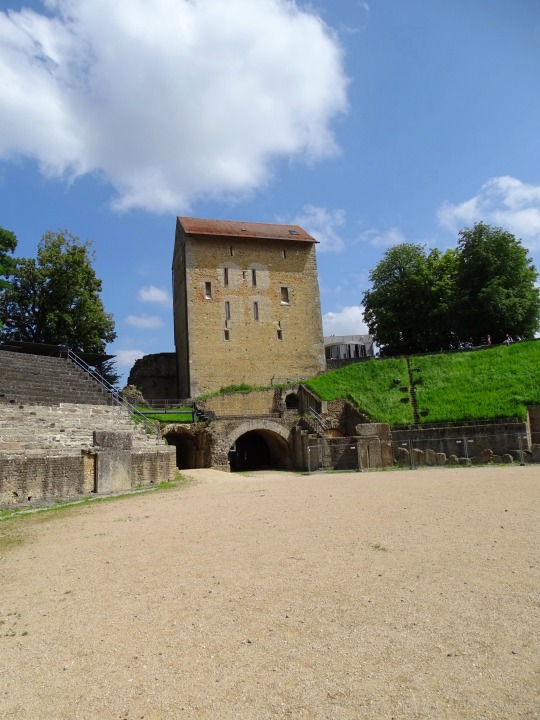



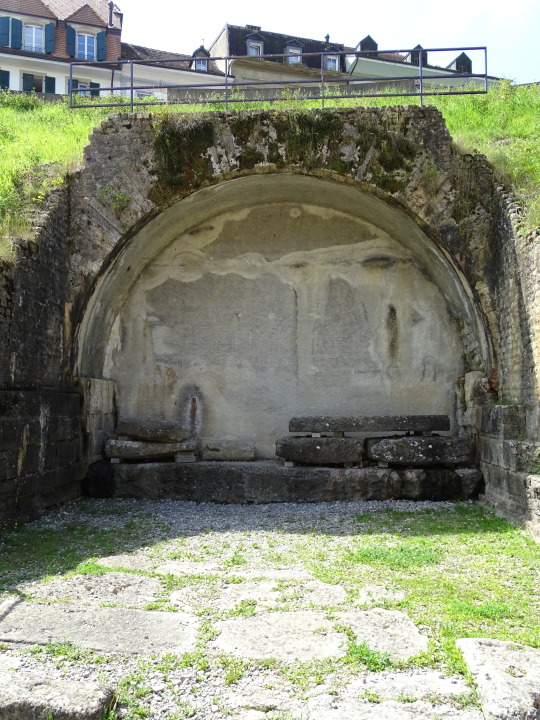





Avenches Amphitheatre (No. 8)
In the arena, animal or gladiator fights take place, reconstructed hunts, under the gaze of the entire people, distributed on the stands according to the social hierarchy. The games are offered by notables, most often “for the salvation of the emperor”. The city authorities parade with effigies of the gods and the fighters during an inaugural procession which opens these festivities, which are at once religious, political and popular.
The amphitheater was probably erected at the beginning of the 2nd century , the earthworks clearing the arena and shaping the embankment which receives the stands, perhaps partly made of wood; only the stairs, the walls of the arena and the coronation, as well as the axial entrances, are made of masonry. In the last third of the same century, the building was enlarged, equipped with stone tiers, a perimeter facade with niches and a monumental portal in large blocks to the east.
Source
#Avenches Amphitheatre#Avenches Roman Amphitheatre#Arènes d'Avenches#L’évêque Tower#tower of the bishop#Suisse#Schweiz#Switzerland#Vaud#Waadt#summer 2021#travel#original photography#vacation#tourist attraction#landmark#architecture#Broye-Vully#viillage#French part#landscape#countryside#Europe#flora#tree#stairs#arch#flower#Aventicum#Swiss history
7 notes
·
View notes
Text
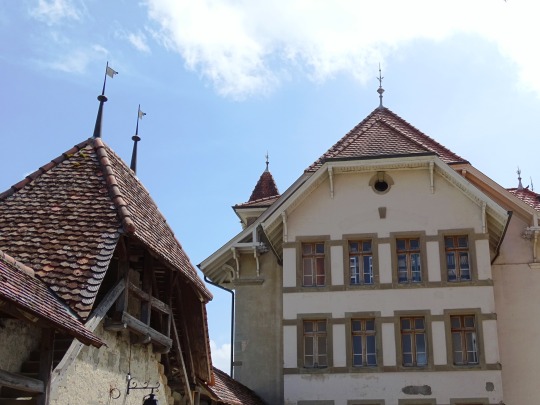

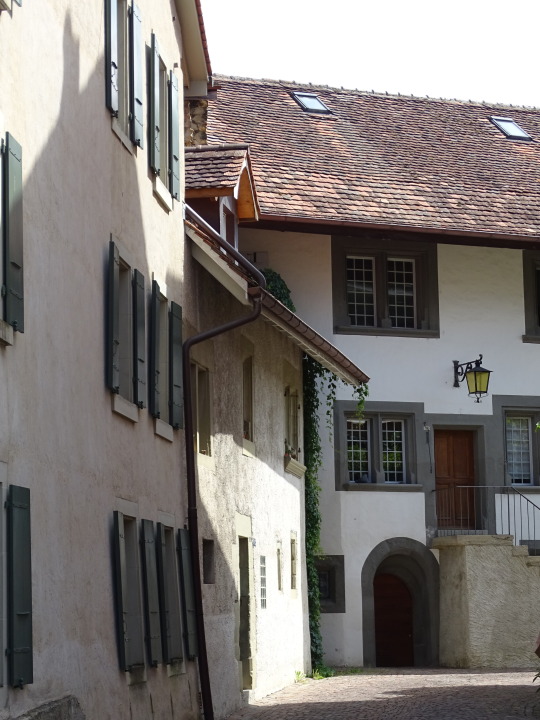
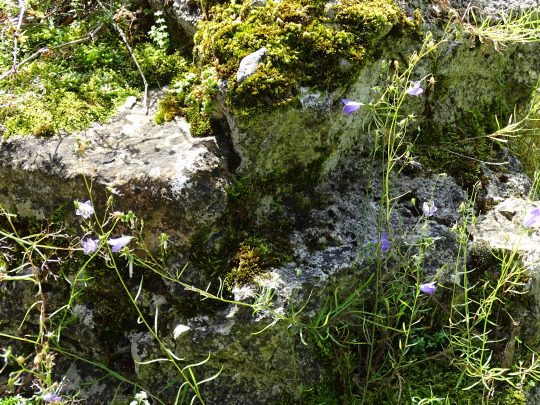


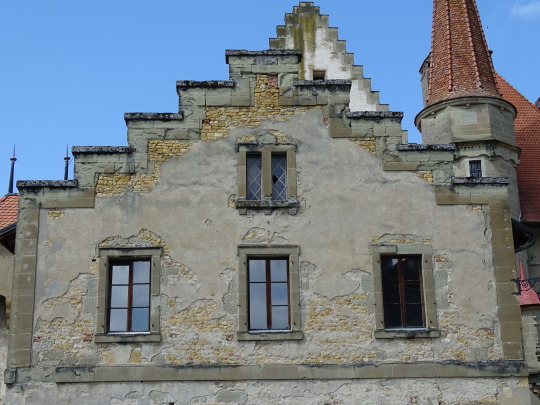

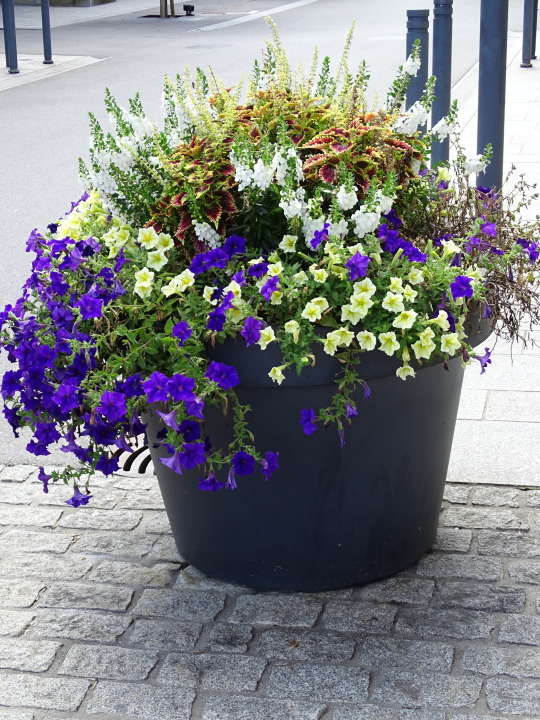
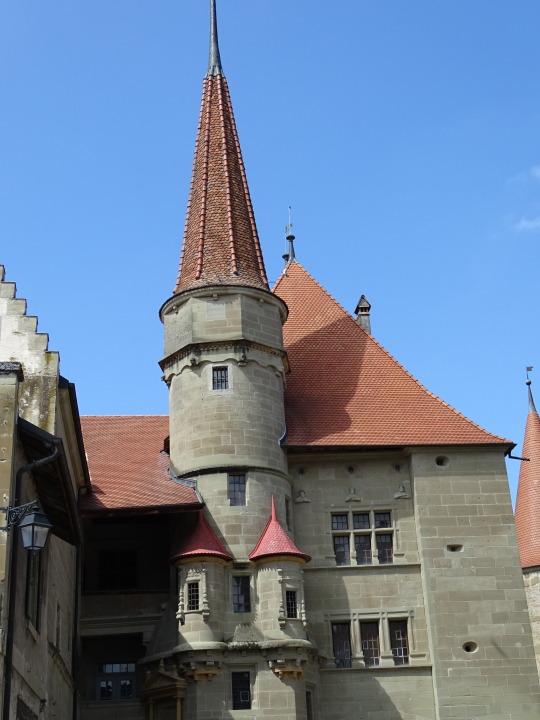
Avenches, Switzerland (No. 5)
Avenches is situated on a secluded hill on the south side of the Broye plain, 17 km north-west of Fribourg.
The territory of the commune includes part of the intensively cultivated plain of the Broye, as well as some hills bordering the plain to the south. The territory of the commune reaches the bank of the Broye to the north-west and is also crossed by the Arbogne. To the north, Avenches has a 1.5 km shoreline on Lake Murten, up to Le Chandon, which borders the commune to the east. To the south, the commune stretches over hills to the village of Donatyre.
The neighbouring communes of Avenches are Faoug (north-east), Vully-les-Lacs (north) as well as Belmont-Broye (west), Misery-Courtion (south-east), Saint-Aubin (north-west) and Courtepin (east) in the canton of Fribourg.
In 1997, the territory consisted of 14 per cent built-up areas, 16 per cent forested areas, 69 per cent agricultural areas, and just under 1 per cent unproductive land.
The inhabitants of the commune are called Avenchois (or Aventicians, from Aventicum).
They are nicknamed the Cacas-Carrés, for their reputation for "doing nothing like the others", and the Pique-Soleil, for spending their time sunbathing in the street and at the foot of the church6.
Source: Wikipedia
#Avenches Castle#Suisse#Schweiz#Switzerland#Vaud#Waadt#summer 2021#travel#original photography#vacation#tourist attraction#landmark#architecture#Broye-Vully#viillage#French part#landscape#countryside#Europe#flora#flower
6 notes
·
View notes
Text




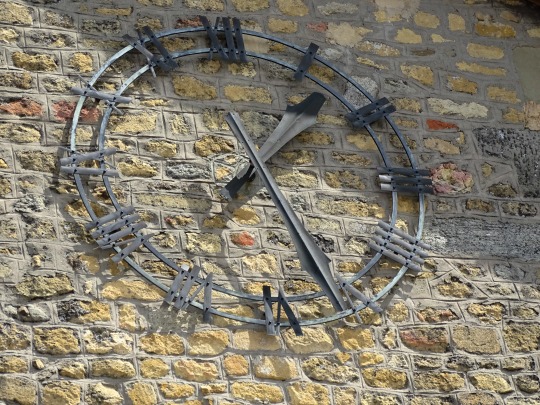


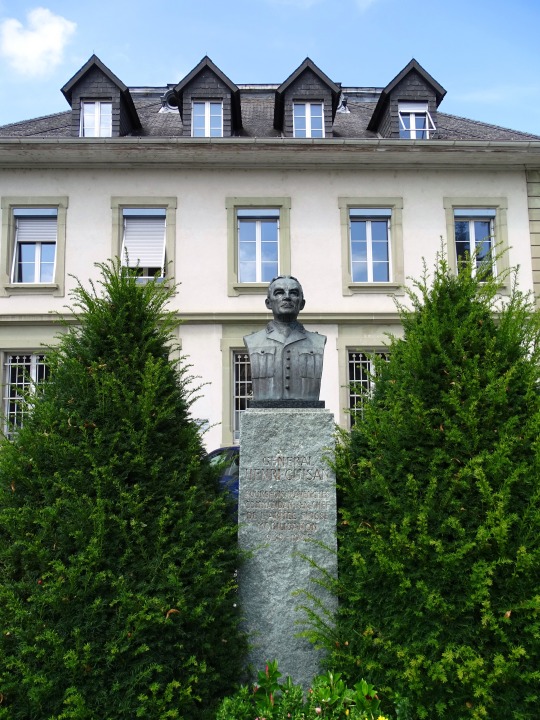
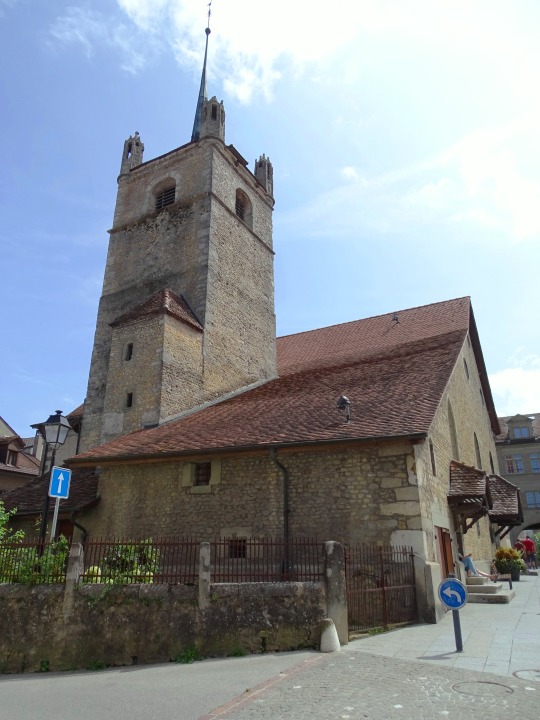

Avenches, Switzerland (No. 1)
Avenches is a Swiss municipality in the canton of Vaud, located in the district of Broye-Vully.
The roots of Avenches go back to the Celts. A tribe of Helvetians had built a settlement on the hills of Bois de Châtel, south of the later Roman settlement. Nearby the Helvetii seem to have had their capital on Mont Vully as shown in recent archaeological excavation. The canal-La Broye-which joins Lac Morat to Lac Neuchâtel is thought to be Roman in origin.
The establishment of the Roman settlement of Aventicum, which became the capital of the province, took place around 15-13 B.C. The name comes from the Helvetian spring goddess Aventia. After patronage by the emperor Vespasian, Aventicum soon developed into a blooming commercial center with over 20,000 inhabitants. The town was granted colonia status-a retirement location for legionaries- although the built up area of the town occupied only a fraction of the walled area -the walls are some 5.6 kilometers in length. The walls were clearly a statement of status rather than being a practical defensive system. Excavations have revealed the detail of the theatre and major temple complex dedicated to the "genius" of Helvetia-Roman Switzerland. One column of the temple stands as the "cigognier"- formerly a nesting site for storks. Other parts of the city still visible are the amphitheatre which includes a later tower now housing the Professor Hans Bogli museum, the baths, the walls, two of the entrances gates, a smaller temple and part of a place building. Excavated but reburied is much of the Roman city. This part of Switzerland was invaded by the Alamanni tribe in the 280's who settled the German speaking parts of Switzerland giving the area its characteristic dialect of German. Rome never really held the area again and after the fall of Rome in the 5th century, a much smaller settlement was built on the former acropolis of the by now abandoned Roman town. The theatre had a short life as a separate defended area. Throughout this period, the town remained the seat of a bishopric and had at least two churches (Saint-Martin and Saint-Symphorian). When the bishop moved his seat to Lausanne in the sixth century, the decline of the former Roman city was complete.
Source: Wikipedia
#Église Sainte-Marie-Madeleine#city hall#town hall#Suisse#Schweiz#Switzerland#Vaud#Waadt#summer 2021#travel#original photography#vacation#tourist attraction#landmark#architecture#Broye-Vully#fountain#Henri Guisan#post office#viillage#French part
2 notes
·
View notes
Text


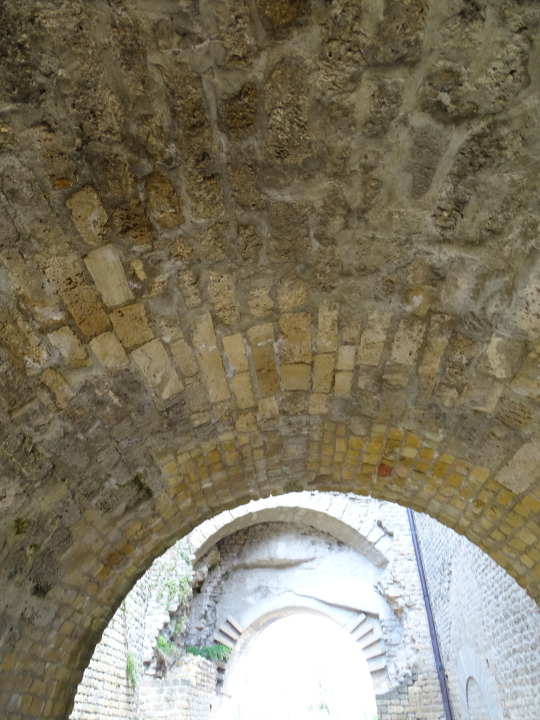
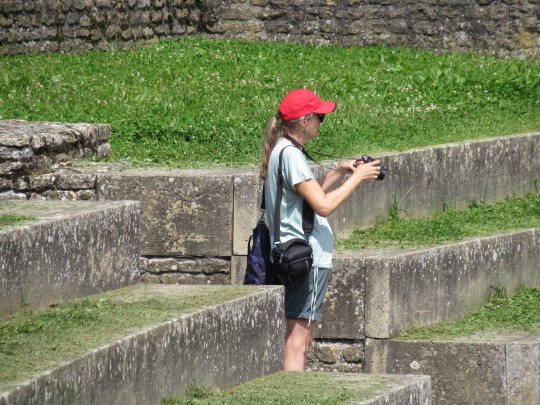
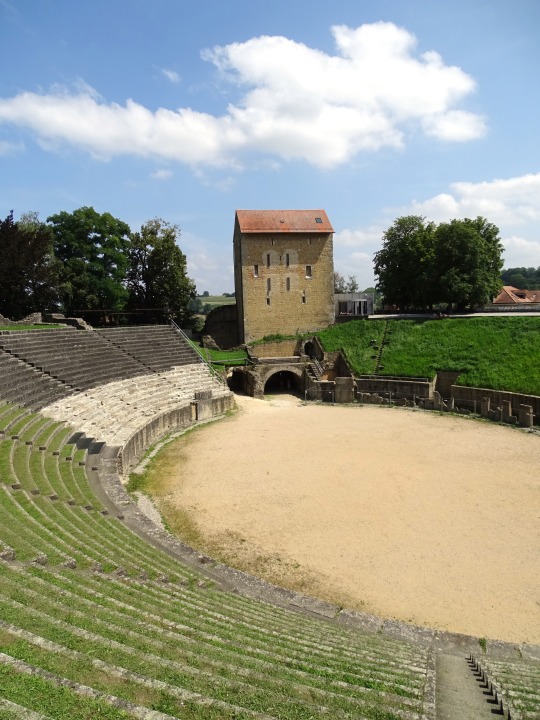

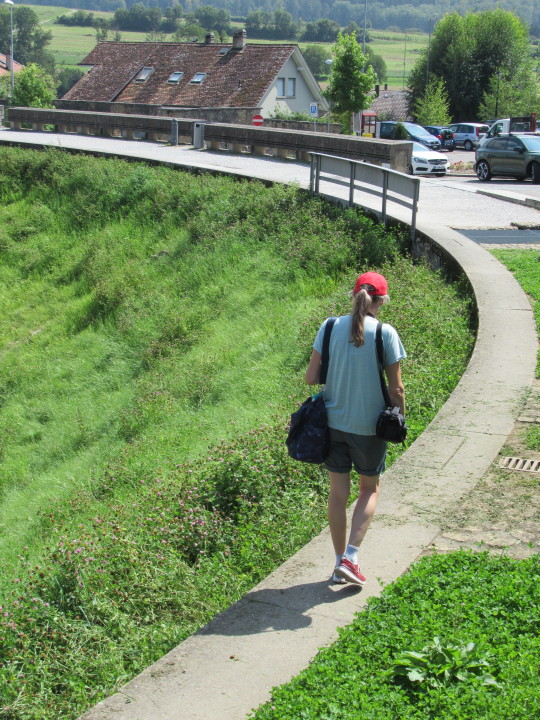

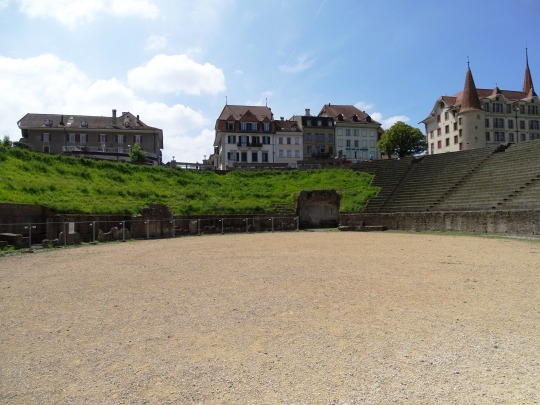


Avenches Amphitheatre (No. 10)
Avenches (Aventicum) was the largest city on Swiss soil from the 1st to the 3rd century. The Roman amphitheater of Avenches was built in the 2nd century. Staircases, walls and main entrances are made of masonry, the spectator stands were originally made of wood. In the 4th century the amphitheater was abandoned and used as a quarry for other buildings. The Roman Museum is now located in the fortified tower that was built later. The amphitheater was buried until 1940 and was only then excavated again. Today it is used for many cultural events.
Over time, cracks and cavities have formed under the stairs and seating blocks as well as in the walls, making stabilization absolutely necessary. The aim of the injection work was to fill the cavities and increase the load-bearing capacity of the soil.
To prevent the resin from leaking out during the injections, the joints in the masonry/stone blocks were previously filled with cement and the masonry/stone blocks were moistened during the injections to prevent the resin from sticking to the masonry/stone blocks . The work was carried out successfully.
Source
#Avenches Amphitheatre#Avenches Roman Amphitheatre#Arènes d'Avenches#L’évêque Tower#tower of the bishop#Suisse#Schweiz#Switzerland#Vaud#Waadt#summer 2021#travel#original photography#vacation#tourist attraction#landmark#architecture#Broye-Vully#viillage#French part#landscape#countryside#Europe#flora#tree#stairs#arch#flower#Aventicum#Swiss history
1 note
·
View note
Text
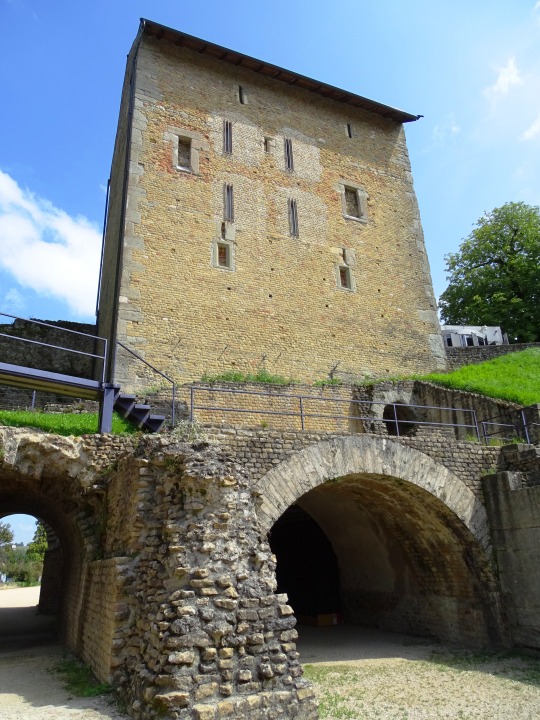
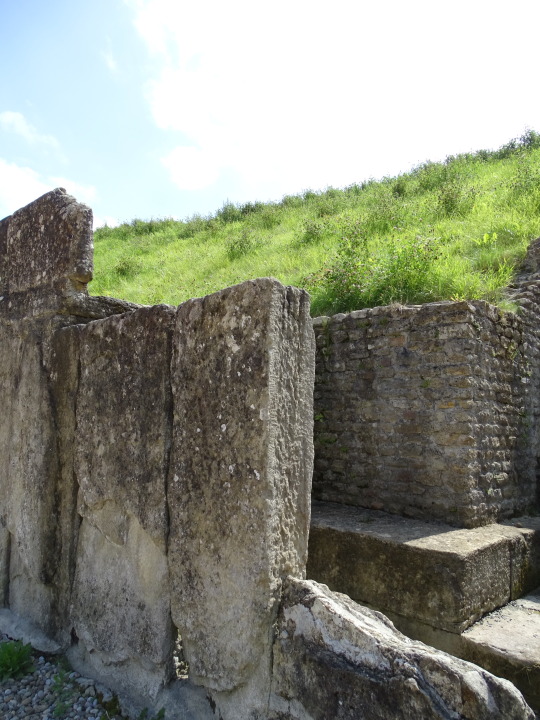



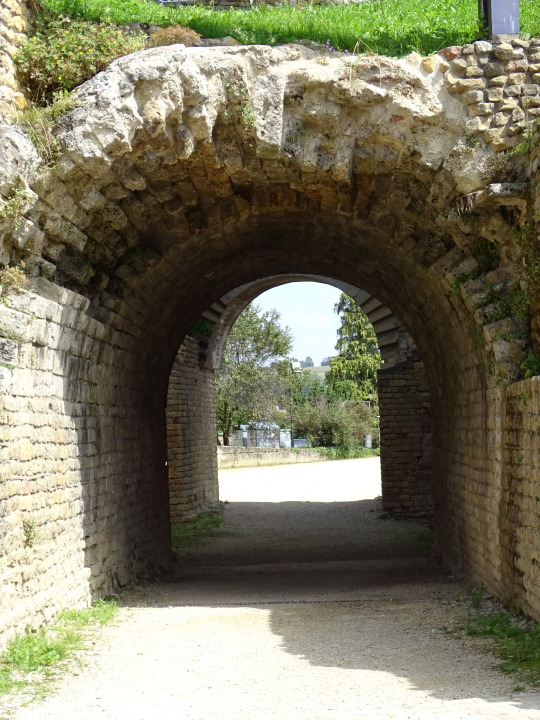
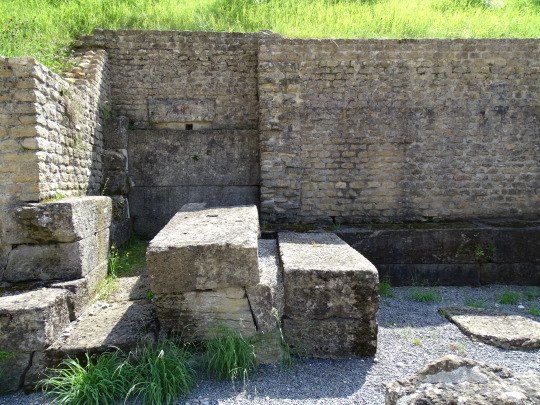



Avenches Amphitheatre (No. 9)
Avenches, then known as Aventicum, was the capital of Helvetia (present-day Switzerland) during most of the Roman era. The town has some Roman ruins that are worth seeing but the main attractions are the Roman amphitheater and the adjacent Musée Romain. The top exhibit is a valuable golden bust of Emperor Marcus Aurelius.
Modern-day Avenches is probably best known for its amphitheater that is frequently used for major opera and rock festivals as well as other events. (The Roman amphitheater in Martigny in the Valais is similarly still in modern-day use for entertainment purposes.)
The amphitheater in Avenches is well preserved and restored and a popular venue for spectacular open-air concerts. These range from an opera festival (July) to rock concerts.
The amphitheater is freely accessible when no performance takes place.
Source
#Avenches Amphitheatre#Avenches Roman Amphitheatre#Arènes d'Avenches#L’évêque Tower#tower of the bishop#Suisse#Schweiz#Switzerland#Vaud#Waadt#summer 2021#travel#original photography#vacation#tourist attraction#landmark#architecture#Broye-Vully#viillage#French part#landscape#countryside#Europe#flora#tree#stairs#arch#flower#Aventicum#Swiss history
0 notes
Text



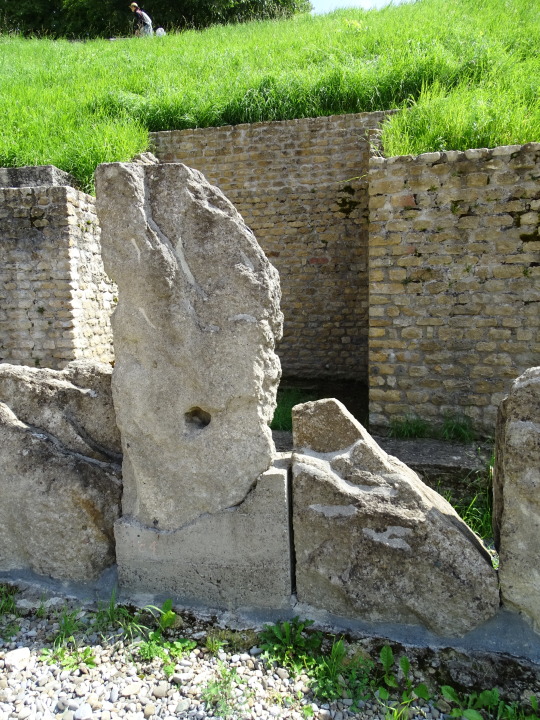



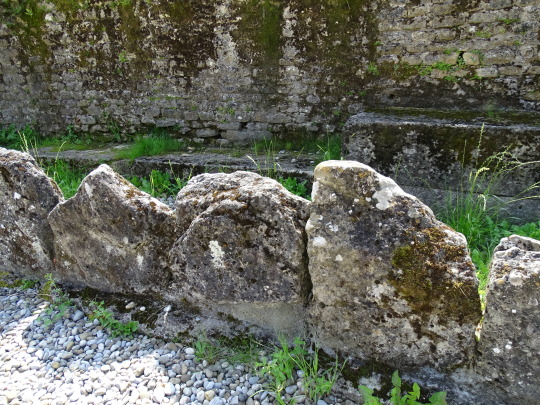

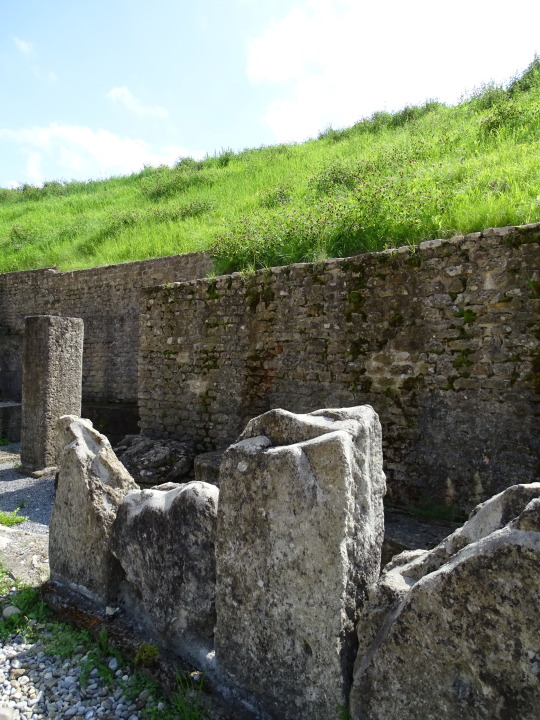
Avenches Amphitheatre (No. 9)
State 1: overall without forecourt: 98.85 x 85.94 m, arena 51.63 x 38.40 m; Capacity: around 9,000 seats spread over 24 bleachers.
Condition 2: overall without forecourt or east gate: 105.01 x 92.11 m; Capacity: around 14,000 seats spread over 36 bleachers.
State 1: small apparatus of yellow limestone rubble; Thresholds, service corridor and podium cladding in shell stoneware.
State 2: small rubble stones of yellow limestone, covered with a plaster decorated with a false apparatus painted red for the committed order of the perimeter wall with niches; tiers and eastern portal in large shell sandstone, columns, bases and capitals in white Urgonian limestone.
Source
#Avenches Amphitheatre#Avenches Roman Amphitheatre#Arènes d'Avenches#L’évêque Tower#tower of the bishop#Suisse#Schweiz#Switzerland#Vaud#Waadt#summer 2021#travel#original photography#vacation#tourist attraction#landmark#architecture#Broye-Vully#viillage#French part#landscape#countryside#Europe#flora#tree#stairs#arch#flower#Aventicum#Swiss history
0 notes
Text

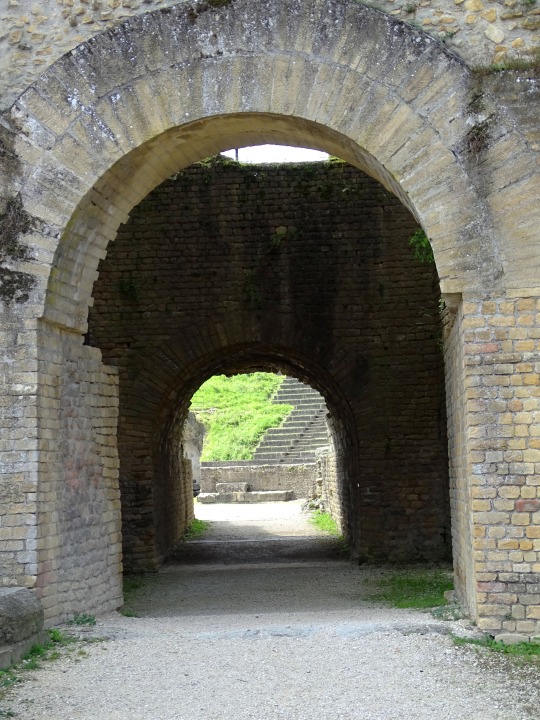
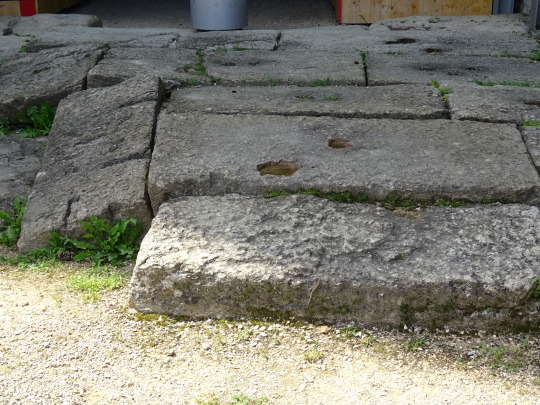






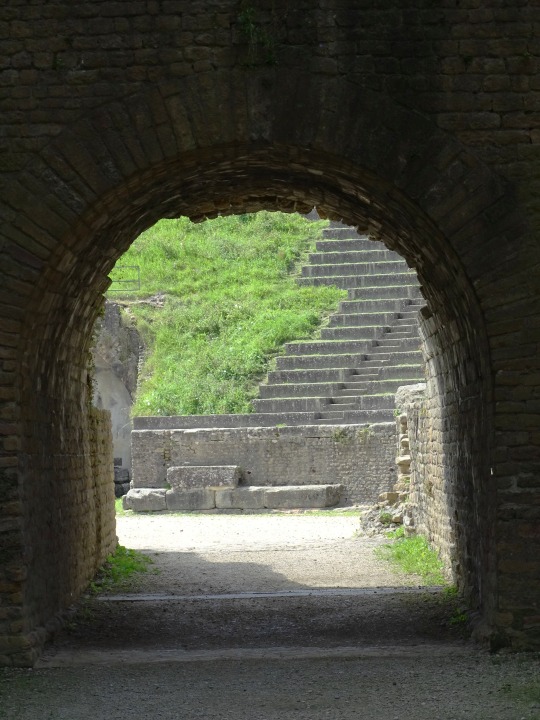
Avenches Amphitheatre (No. 7)
One of the most intriguing sites to visit in Avenches is the Roman amphitheater. It was built during the 2nd century AD in two stages with 31 rows that could accommodate up to 16,000 spectators. From this, we can surmise that Aventicum was once a fairly large city.
After the invasion of Germanic tribes known as the Alemanni during the 3rd century, the amphitheater was abandoned. Its stones were hauled away and used in other constructions. What you’ll see today is mostly a reconstruction.
The arena where the spectacles took place is oval-shaped. Most of the spectacles involved death and included executions, gladiators, and animals on staged hunts. Artistic performances were held at the nearby Roman theater.
These days, the amphitheater is used for operas, festivals, and military performances. No entrance fee is charged to visit the site and you’re allowed to go down to the arena.
Source
#Avenches Amphitheatre#Avenches Roman Amphitheatre#Arènes d'Avenches#L’évêque Tower#tower of the bishop#Suisse#Schweiz#Switzerland#Vaud#Waadt#summer 2021#travel#original photography#vacation#tourist attraction#landmark#architecture#Broye-Vully#viillage#French part#landscape#countryside#Europe#flora#tree#stairs#arch#flower#Aventicum#Swiss history
1 note
·
View note
Text








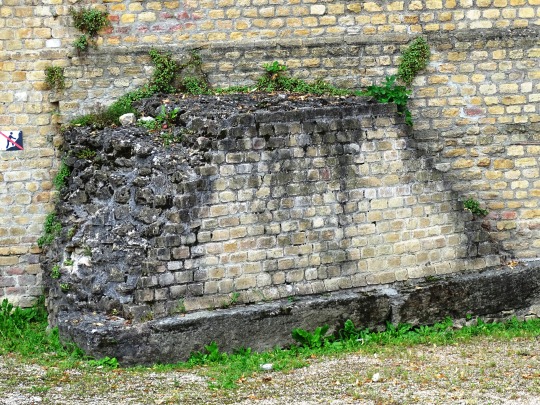
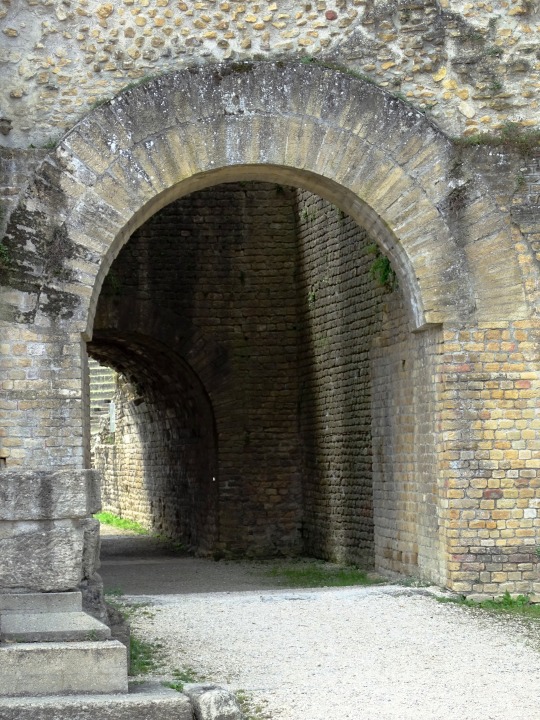
Avenches Amphitheatre (No. 6)
Near Lake Morat, Avenches retains the vestiges of its glorious past as the capital of Roman Helvetica. The most impressive testament to its history is undoubtedly the roman amphitheatre. Magnificently preserved, this historic setting with its splendid acoustics is the ideal venue for music festivals.
The Avenches amphitheatre dates from the early 2nd century A.D., its stairs, walls and axial entrances being made of stone and the seating tiers wood. Ceased to be used in the 4th century, the amphitheatre served as a stone quarry. In the 11th century, the bishop of Lausanne had a fortified tower built on its eastern entrance: the current Roman Museum. The baths of the forum, the theatre and the Tornallaz –the only remaining tower of the roman enclosure of 73 towers – are visible, but most of Aventicum is now buried.
In this exceptional setting, summer nights come alive to the tune of a series of musical events. In August, Rock Oz’Arènes, the smallest of the big festivals, has an enthusiastic following thanks to its eclectic programme and the participation of international stars. In September, Avenches Tattoo, an international military music festival, explodes in a harmony of sounds and colours.
Source
#Avenches Amphitheatre#Avenches Roman Amphitheatre#Arènes d'Avenches#L’évêque Tower#tower of the bishop#Suisse#Schweiz#Switzerland#Vaud#Waadt#summer 2021#travel#original photography#vacation#tourist attraction#landmark#architecture#Broye-Vully#viillage#French part#landscape#countryside#Europe#flora#tree#stairs#arch#flower#Aventicum#Swiss history
0 notes
Text
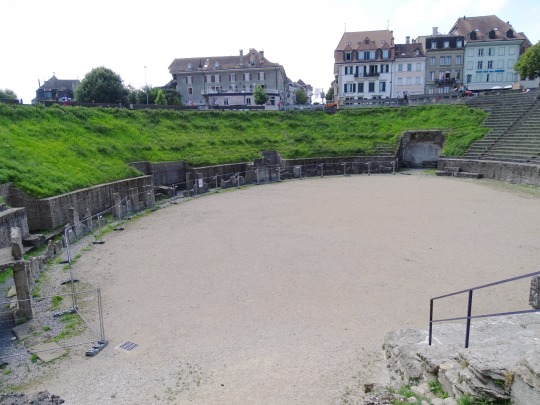




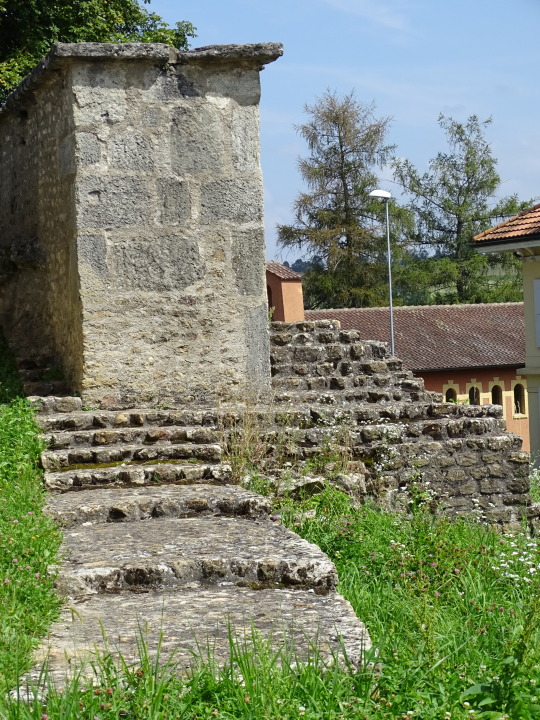

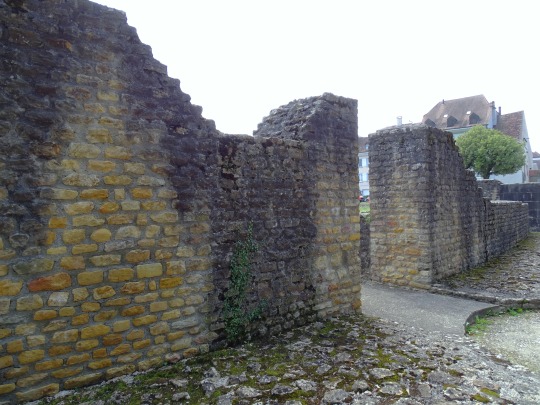


Avenches Amphitheatre (No. 5)
The amphitheater was perhaps fortified in the Late Roman Empire but there is nothing to prove it - the theater, for its part, was undoubtedly transformed into a fortress. It was used as a quarry from the 6th century for the production of lime from its limestone stones, and it was the basis of certain constructions from the Middle Ages: in the 11th century , on the initiative of the bishop of Lausanne, a tower is built astride the eastern part of its cavea, above the monumental door; this tower is called the “Bishop’s Tower”.
In 1751, the construction of a road destroyed part of its front wall. In 1870, the amphitheater was only mentioned in the form of a “large elliptical concavity around which some remains of the walls can be seen”.
The development of the amphitheater began in 1906 5 . A third of the elevation of the monument has disappeared. In the early 1990s, restoration work on the monument was completed. In modern times, the medieval tower built on the amphitheater houses the Roman museum of Avenches.
The site is used for numerous events including, in particular, the Avenches Opéra Festival taking place in July, as well as two annual summer festivals called Rock Oz'Arènes in August and Avenches Tattoo in September. The amphitheater is listed as a Swiss cultural property of national importance .
Source: Wikipedia
#Avenches Amphitheatre#Avenches Roman Amphitheatre#Arènes d'Avenches#L’évêque Tower#tower of the bishop#Suisse#Schweiz#Switzerland#Vaud#Waadt#summer 2021#travel#original photography#vacation#tourist attraction#landmark#architecture#Broye-Vully#viillage#French part#landscape#countryside#Europe#flora#tree#stairs#arch#wildflower#Aventicum#Swiss history
0 notes
Text



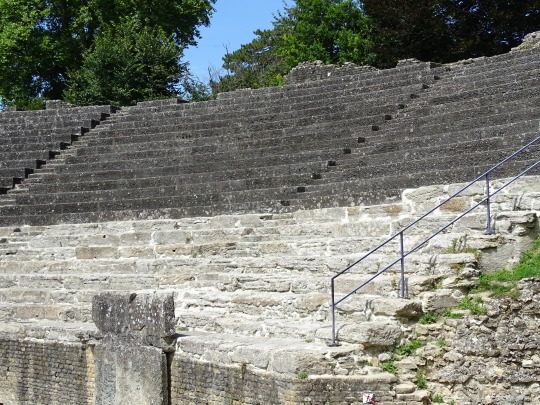
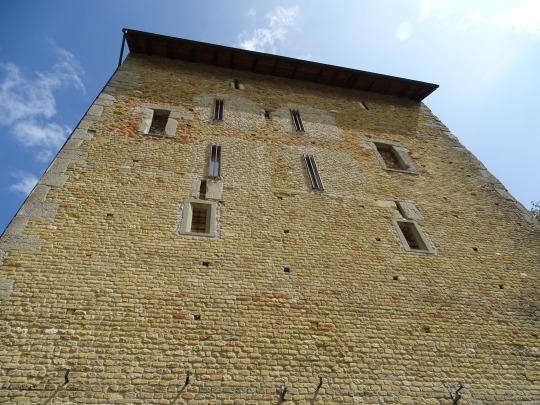


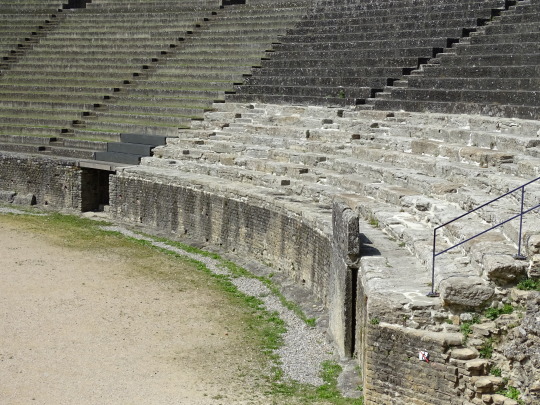
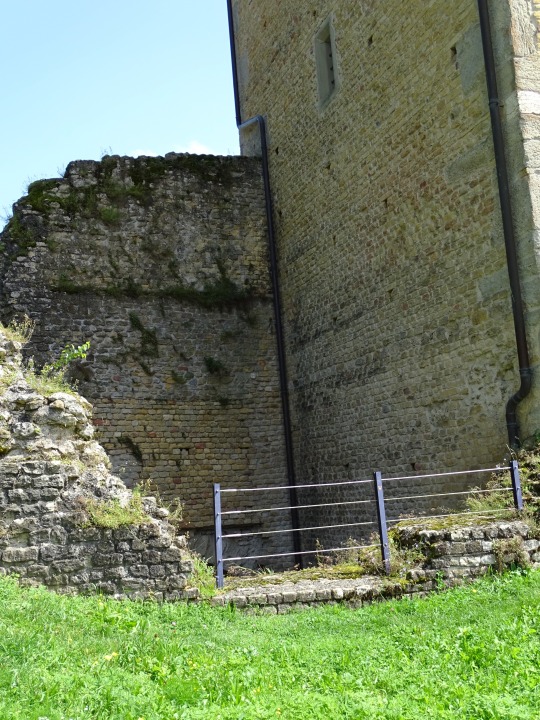
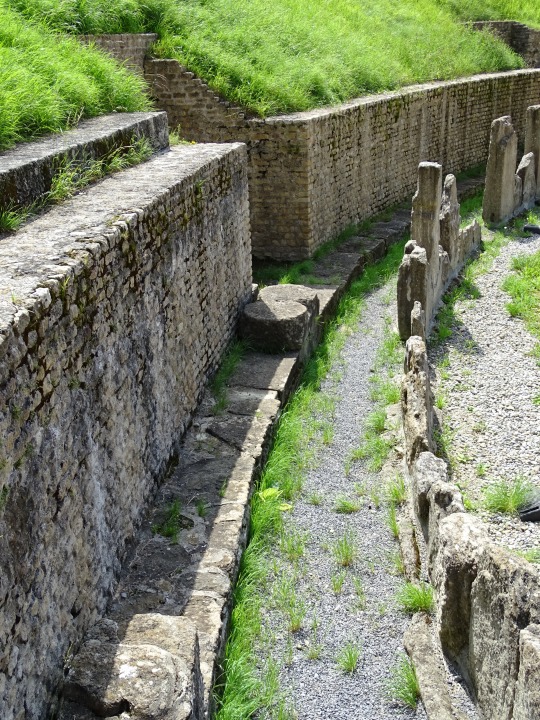
Avenches Amphitheatre (No. 4)
The cavea of the amphitheater was enlarged under the reign of Marcus Aurelius and Lucius Verus , around the year 165, its arena not being modified. It is covered with plaster decorated with false apparatus, its capacity reaches 16,000 seats 2 thanks to 12 additional tiers, and its long axis then measures 105 meters. The cavea , whose slope is more pronounced, is accessible by eighteen vomitories and stairs.
This phase of expansion is also characterized by the desire to monumentalize the amphitheater to give it the appearance of a monument with a hollow structure, the facade of which is composed of large blocks . The new facade has arcades and columns and the entrance overlooking the forecourt, treated like a triumphal arch, is topped with a pediment. The choice of colors of the materials, gray rocks (sandstone), creamy white (limestone) depending on the uses, contrasting with the small yellow limestone device of the first state, contributes to the aesthetic. This phase of expansion but above all of embellishment comes at a time when amphitheaters are becoming the architectural expression of the power of the capitals of cities.
Source: Wikipedia
#Avenches Amphitheatre#Avenches Roman Amphitheatre#Arènes d'Avenches#L’évêque Tower#tower of the bishop#Suisse#Schweiz#Switzerland#Vaud#Waadt#summer 2021#travel#original photography#vacation#tourist attraction#landmark#architecture#Broye-Vully#viillage#French part#landscape#countryside#Europe#flora#tree#stairs#arch#flower#Aventicum#Swiss history
0 notes
Text
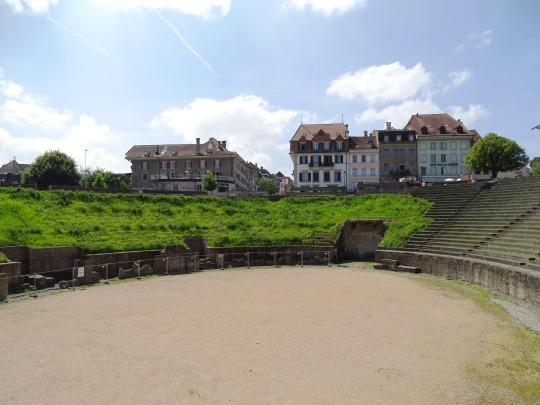









Avenches Amphitheatre (No. 3)
Built in a small structure of yellow limestone rubble, around the year 120 or 130 AD, this Roman amphitheater measures 99 meters in its long axis and can accommodate 9,000 spectators on 24 stands. It is a largely solid or massive amphitheater, the wooden stands resting on an earth embankment, with the exception of the two ends of the main axis which adopt a more usual hollow structure, with a system of radiating walls and annular on which the cavea rests . Its construction meets strictly functional requirements, without deliberate aesthetic research.
To the east, a triple door provides access to the arena and the base of the stands, while at the opposite end a ramp provides access to the city. To the south, a service corridor borders the arena.
Source: Wikipedia
#Avenches Amphitheatre#Avenches Roman Amphitheatre#Arènes d'Avenches#L’évêque Tower#tower of the bishop#Suisse#Schweiz#Switzerland#Vaud#Waadt#summer 2021#travel#original photography#vacation#tourist attraction#landmark#architecture#Broye-Vully#viillage#French part#landscape#countryside#Europe#flora#tree#stairs#arch#flower#Aventicum#Swiss history
0 notes
Text







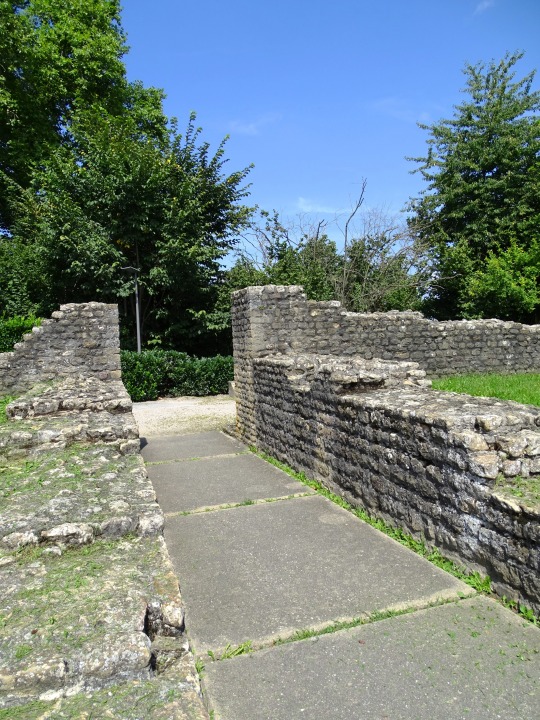


Avenches Amphitheatre (No. 2)
The amphitheater occupies, in the ancient city of Aventicum , capital of the Helvetian civitas , an eccentric position, to the west-southwest of the area recognized as densely urbanized. This location, at the top of a sacred hill, seems to be chosen so that from the top of the stands spectators can see the entire city and conversely, the amphitheater is visible from any location in Aventicum. In addition, a straight line passing through the long axis of the amphitheater divides the ancient city into two approximately equal and symmetrical parts.
It is located approximately in the center of the modern town of Avenches.
Source: Wikipedia
#Avenches Amphitheatre#Avenches Roman Amphitheatre#Arènes d'Avenches#L’évêque Tower#tower of the bishop#Suisse#Schweiz#Switzerland#Vaud#Waadt#summer 2021#travel#original photography#vacation#tourist attraction#landmark#architecture#Broye-Vully#viillage#French part#landscape#countryside#Europe#flora#tree#stairs#arch#flower#Aventicum#Swiss history
1 note
·
View note
Text
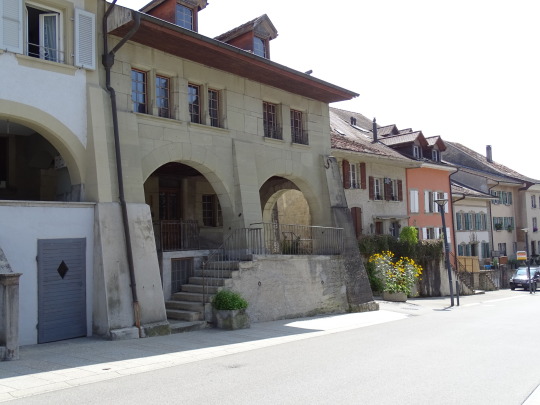

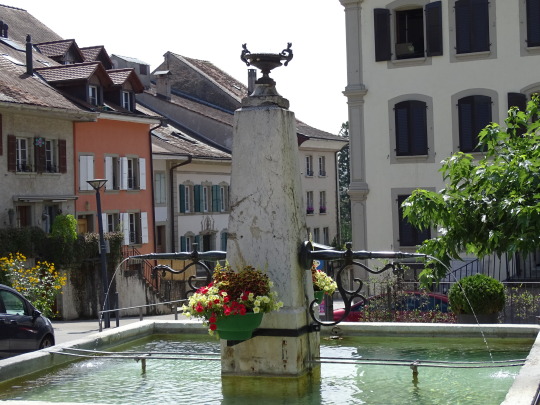


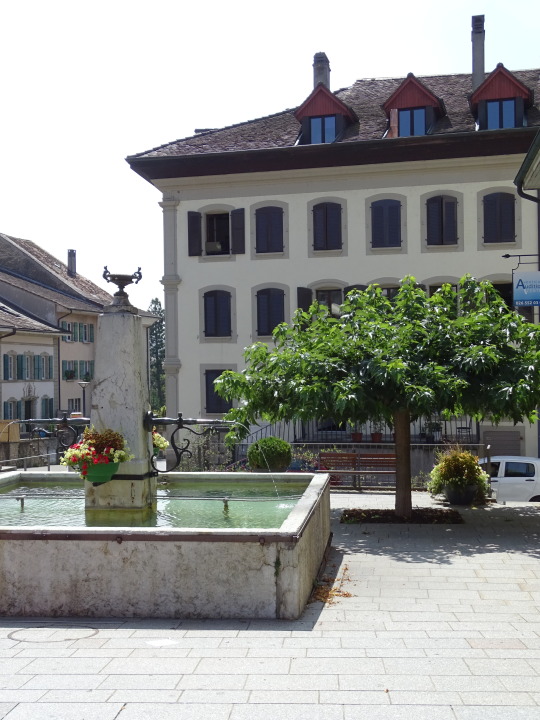

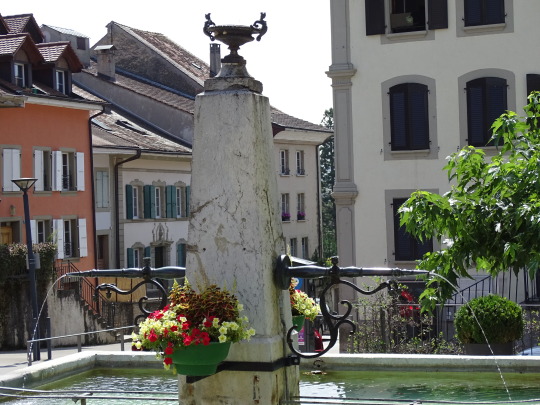
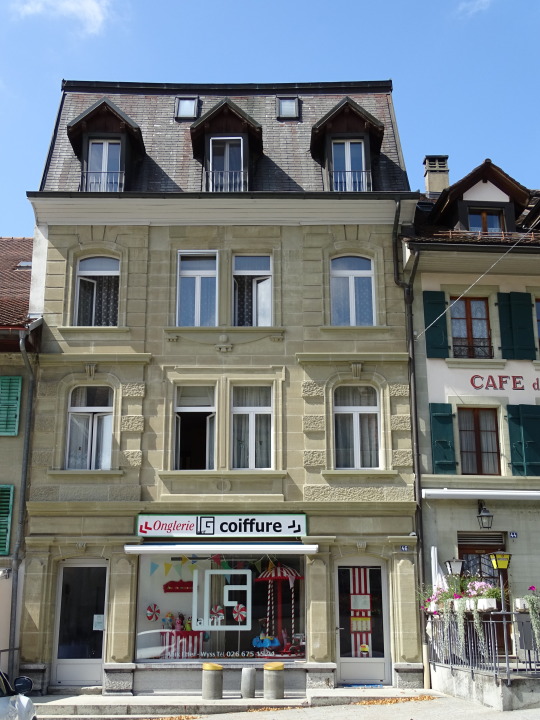
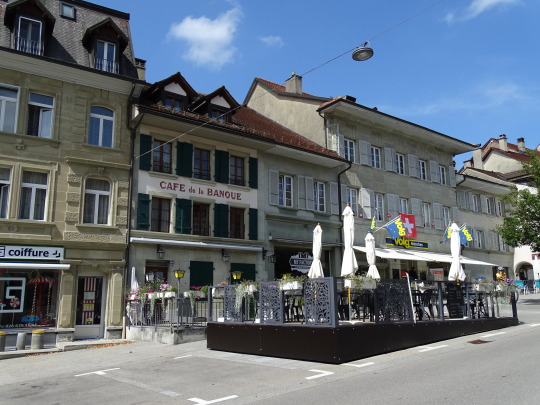
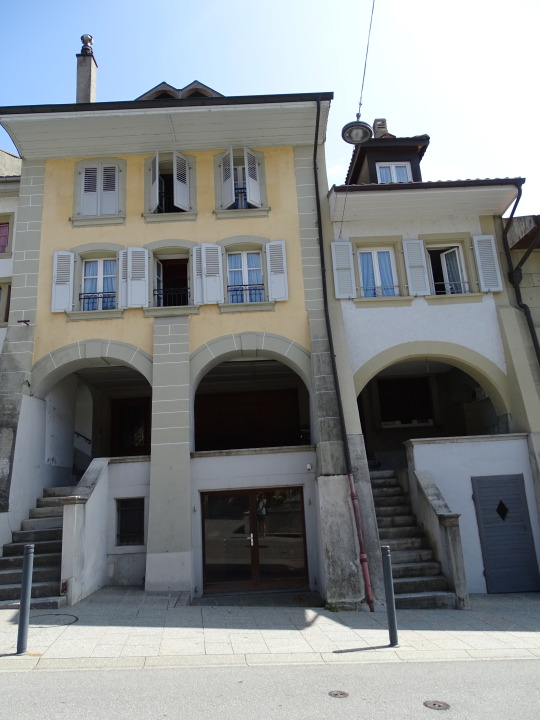
Avenches, Switzerland (No. 8)
The roots of Avenches date back to the Celts. A tribe of the Helvetier founded at the height of the Bois de Châtel an Oppidum in the first century BC. This oppidum probably replaced an earlier oppidum on Mont Vully, which was abandoned at about the same time.
The foundation of the Roman city of Colonia Pia Flavia Constans Emerita Helvetiorum Fœderata, as they officially told, or Aventicum, as the local population said, is today scheduled around 15–13 BC. Acute. According to the older name research, the name Aventicum is derived from a Helvetic source goddess Aventia; today it is based on the Celtic creek name Aventa, which has been enlarged around suffix -ko/-cum. The first mention of the place is found in Tacitus, who for the year 69 already calls him the capital of the Helvet (caput gentis).
Aventicum soon developed into a flourishing trading town with around 20,000 inhabitants and finally became a bishop's seat. The decline of the Roman city continued in the 3rd. century AD, caused by inner imperial turmoil and plundering traits of the Alamanni. The remaining inhabitants settled on the hill, where the present town is located. A new fortified settlement was built in the 5th. founded again on the site of the Roman city. Aventicum remained at least two churches (Saint-Martin and Saint-Symphorien) during the troubled times and the ongoing threat of the Alamow. Only in the middle of the 6th In the century, when Bishop Marius moved his seat to Lausanne, this meant the final end for Aventicum. However, the place was probably still inhabited.
In 1074, the Lausanne bishop Burkhard von Oltigen founded a new town on the hill of today's town, which was known in the Middle Ages under the Latinized name Adventica and first appears in the English-language noisy Avenchoz, in 1518 Avenche, in 1349. The German name Wiflisburg, which neither corresponds with the Latin nor with the French variant, goes back to an early Alemannic settler named Wibili and is first occupied as Wibilsburg in 1266 (1258?); later testifications are Wipelspurg (1302), Wibelspurg (1458), Wiblispurg (1476), Wiflispur (1578) and Wiflisburg (1577).
Source: Wikipedia
#Rue Centrale#Suisse#Schweiz#Switzerland#Vaud#Waadt#summer 2021#travel#original photography#vacation#tourist attraction#landmark#architecture#Broye-Vully#viillage#French part#landscape#countryside#Europe#flora#street lamp#tree#stairs#arch#door#fountain#St. Magdalene's Reformed Church#Église réformée Sainte-Madeleine#flower#Rue Central
0 notes